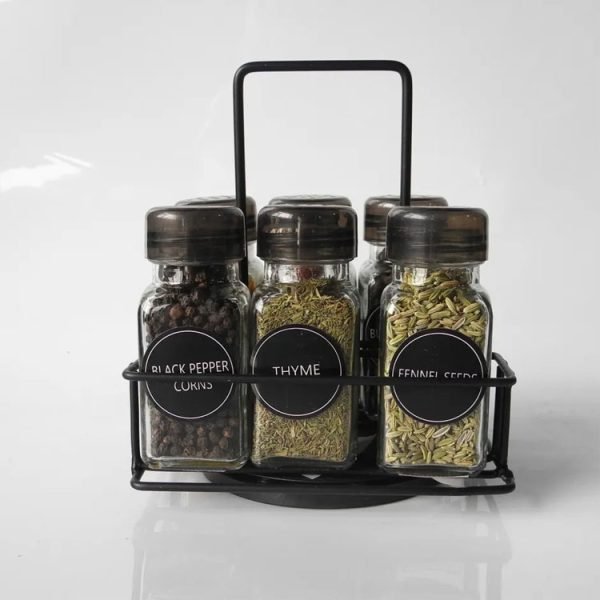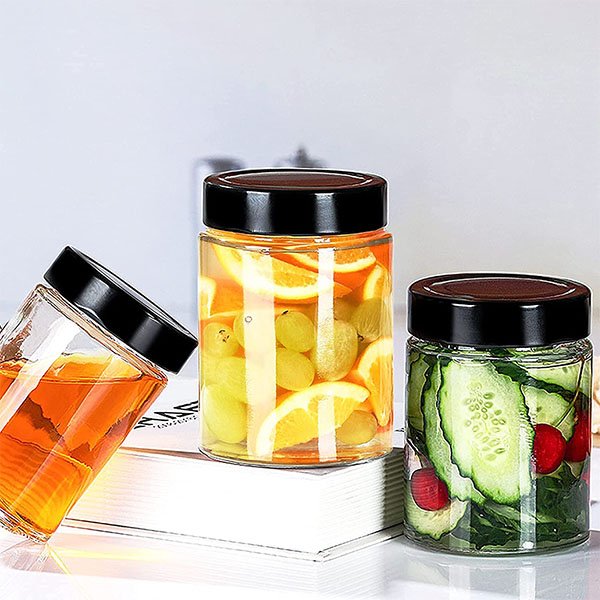Spices and seasonings have been an integral part of the culinary world for centuries. From enhancing the flavors of dishes to adding depth and aroma, spices play a vital role in cooking. If you’re passionate about food and flavor, starting a spice and seasoning business can be a rewarding venture. Becuase according to the previous market research on website, the worldwide spice market reached a value of roughly USD 14.3 billion in 2020. Projections indicate that this market is on track to reach USD 22.1 billion by the year 2027.
This article will guide you through the steps to start a successful spice and seasoning business.
1. Make a spice and seasoning business plan
The most important thing before starting any business or doing anything is to have a workable and effective plan. Otherwise, doing something blindly will only be a waste of time and money.
Spice and seasoning market research
First of all, you need to conduct a thorough and detailed investigation of the market to understand who our target customer groups are, their preferences for spice and seasoning, which spice and seasoning products sell best on the market, and why they sell well. After you have a clear understanding of the target market, you can better plan how you will launch our own Spice and Seasoning business.
Spice and seasoning business plan
After correctly understanding the target market, you need to write a feasible business plan. In this process, you need to clarify our target customers, collect some customer data, analyze competitors, and analyze market trends. Then plan out the steps needed to start your business and set a timetable for them. The steps that can be included in the business plan can be found below.
2. Apply for a license and register for a business account
Before starting a spice and seasoning business, you also need to research the legal requirements, as the food industry often requires strict compliance with relevant food safety regulations. First, you need to study the local legal requirements for spices and seasoning, such as packaging guidelines (whether spice ingredients need to be listed on the packaging, allergy information sources), whether the company needs to purchase commercial insurance, etc. Then apply for the necessary business licenses and permits from the local area.
Moreover, don’t forget to open a bank account for your business, which involves the wages of business-related personnel and the cost of materials required for the business. In addition, to conduct business, you also need to register a tax account for the enterprise.
3. Purchase quality spices
It is very important to cooperate with high-quality and reputable spice suppliers. Without good raw materials, there is no way to make good spices.
So how do you find and establish a good and lasting relationship with high-quality spice suppliers? You can pay attention to following steps:
- Create a roster of potential spice suppliers, giving preference to those sustainable sourcing, and top-notch spice quality.
- Before directly start the cooperation between you two, request samples of their products. This allows you to personally assess the spices’ quality, aroma, and flavor. You can decide whether to cooperate with this supplier or not according to the sample quality.
- When possible, opt for suppliers holding industry-recognized certifications like Fair Trade, USDA Organic, or Non-GMO Project Verified.
- Examine the supplier’s pricing structure and payment terms to ensure they match your budget and financial requirements.
- Cultivate strong relationships with your selected suppliers through transparent communication, trust, and collaborative efforts. You can utilize some related software to streamline negotiations, billing, and overall vendor relationships.
- Consider diversifying your sources by working with multiple suppliers or obtaining spices from different regions to mitigate the risks of food supply chain disruptions.
- Regularly assess your suppliers’ performance concerning quality, timely deliveries, and excellence in eCommerce customer service. If the quality of the spices provided by this supplier has declined, or the delivery time is often delayed, then you can consider adjusting the quantity purchased from them to avoid business losses.
4. Create unique spice and seasoning blends
After deciding on your raw material supplier, you need to think about how to mix the spices. When blending spices, it is important to develop a range of unique and delicious spice blends to suit different tastes and preferences, especially those of your target customer groups.
So how do you make your spice blend stand out among related products? You can refer to the following steps:
- Research the flavor profiles, ingredients and uses of purchased spices
- Spend time in the kitchen blending spices to develop flavors that wow you first
- Consider developing spice blends for specific purposes, such as for grilling, soups, stir-fries, etc. Specific uses are more likely to attract well-targeted customer groups.
- Invite family and friends to taste the resulting spice blend and adjust the recipe based on their feedback.
- Don’t forget to regularly develop new spice blends and keep up with the times to stand out from the rest of the industry
5. Choose beautiful and practical containers for your spices
After determining the spice recipe, we need to study the containers that hold the spices and the tools needed to access these containers.
If the spice mix you decide to sell comes in a set with several flavors, you can choose a glass spice jar set. The transparent glass bottles make it easy for customers to clearly distinguish what is in each bottle when using it.

You can also choose glass spice jar set with rack. This set can be displayed in the store and is also more convenient for customers to store spice containers.

If you are not sure how to choose glass spice jar set manufacturer and spice rack manufacturer, you can consider using our products. If you have any questions, please feel free to contact us for consultation.
6. Determine brand name and packaging design
When your target customers choose products, whether they are shopping online or in a mall, the first thing they see must be the product packaging and brand logo. Many people are not very professional in selecting spices, so within the same series of products, they may be more inclined to products with good-looking packaging.
Based on your expectations for your brand, your beliefs, principles of work, etc., determine the name of the brand, then design the logo and packaging, and hire a designer if necessary (but this will increase some costs). In addition, you can also consider writing a short story for the establishment of your brand. Interesting and attractive stories can often better establish a brand’s image and establish an emotional connection with your customers.


7. Determine the price and main sales channels
Product price
First, we need to calculate the cost of the product (including raw materials, packaging costs, labor costs, transportation costs, etc.), study the prices of competitors’ products, and then set the product prices according to different sales channels. For example, if you sell to stores or supermarkets, the price can be 1.5 times the cost. If you sell directly to customers, the price can be 2-3 times the cost. If you sell wholesale, the price will generally be lower. These values are for reference only.
Sales channels
Possible sales channels include the following:
- Sell through your own branded website
- Cooperate with local specialty stores or supermarkets to sell products in their stores
- Provide products to restaurants and catering companies and strive to be their stable spice supplier
- Open your own store specializing in spices (this sales method is recommended when you have already established brand awareness)
If you sell through the website, you can get feedback from customers in a more timely and effective manner, and you can also better control the customer’s experience with the website and spice products. However, if you choose this method, you need to ask someone to help you build a website. When the brand is first established, you may also need to spend money on advertising to attract customers.
Reach out to nearby restaurants, cafes, and catering establishments, proposing to provide them with your signature spice blends for use in their culinary creations. This strategic move not only enables you to tap into a fresh customer base but also bolsters your brand’s reputation by aligning with respected players in the food industry.
Collaborate with wholesale distribution firms to extend your presence across a broader spectrum of retailers, eateries, and various food enterprises. This approach allows you to expand your market outreach and boost sales volume, though it might necessitate accommodating a narrower profit margin due to wholesale pricing.
8. Promoting your brand
To promote your spice business effectively, start with an eCommerce website, engage with your audience on social media, and use content and email marketing. Collaborate with influencers, partner with local retailers, and attend industry events to expand your reach and foster customer loyalty.
In addition, theme activities or promotions can be carried out according to festivals and current hot spots. In this case, customers are more likely to get involved and can better expand brand awareness.
After knowing all these steps, someone may also wonder how much does it cost to start a spice business?
Average 5000 – 15,000 dollars. The cost includes following aspects: business registration, relevant license applications, costs of raw materials and packaging containers, cost of spice storage (renting a warehouse to house the products), packaging costs and initial marketing costs.
This value is for reference only, because there will be differences in labor and raw material prices in different regions, and everyone has different priorities when doing business. For example, some people may spend more to promote the brand, and some may spend more. Use the money to design the brand packaging box logo. Therefore, the cost will fluctuate.
Starting a spice and seasoning business can be a fulfilling endeavor for those passionate about flavor and culinary art. With careful planning, quality sourcing, and effective marketing, your venture can thrive in a competitive market. Remember to adapt to changing consumer preferences, continuously innovate, and always deliver on your commitment to quality. With these principles in mind, your spice and seasoning business can become a flavorful success story.




